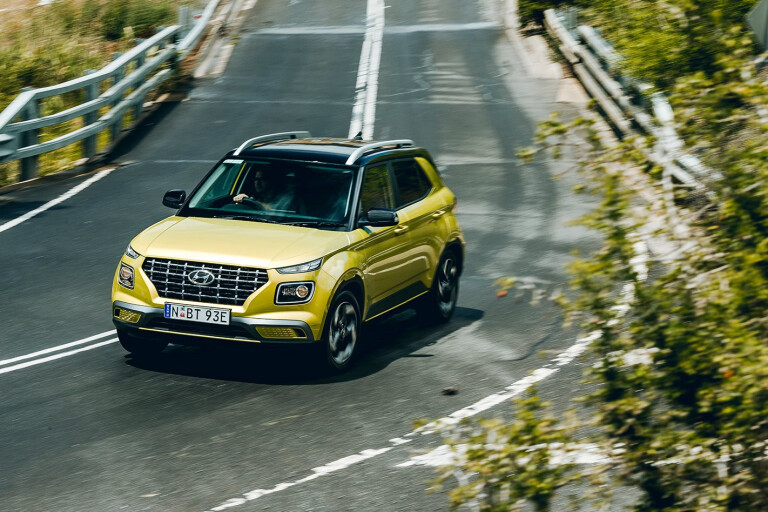
The 2020 Hyundai Venue is the most affordable car from the South Korean manufacturer and, starting from $19,990, doubles as one of the most affordable SUVs in Australia too.

What is it?
The Hyundai Venue is a new runner in the small SUV segment, having made its debut in late 2019. Three grades are offered in Australia, but on test we have the range topper, the Venue Elite, which costs $25,490 (before on-road costs).
The Venue Elite slots in neatly below the slightly larger Kona and features a suite of features like autonomous emergency braking, blind-spot warning, rear cross-traffic alert, cruise control, an 8.0-inch touchscreen with Android Auto/Apple CarPlay, 17-inch alloy wheels, two-tone paint, satellite navigation and climate control.
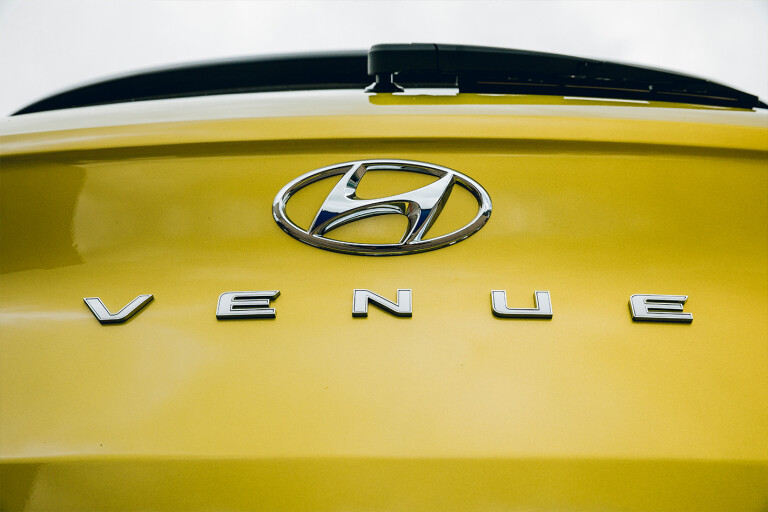
All versions are front-wheel drive and powered by a 1.6-litre naturally aspirated four-cylinder engine that outputs 90kW and 151Nm, but curiously also features a mode dial which caters for conditions like snow, mud and sand, which modifies the traction control's behaviour to cater for surfaces other than tarmac.
What’s it like to live with?
Whichever specification Venue you go for, each version is fortunately well-equipped so it’s unlikely you’ll be left wanting for extras. The reason you go for a higher-spec version like the Elite is because things are simply nicer.
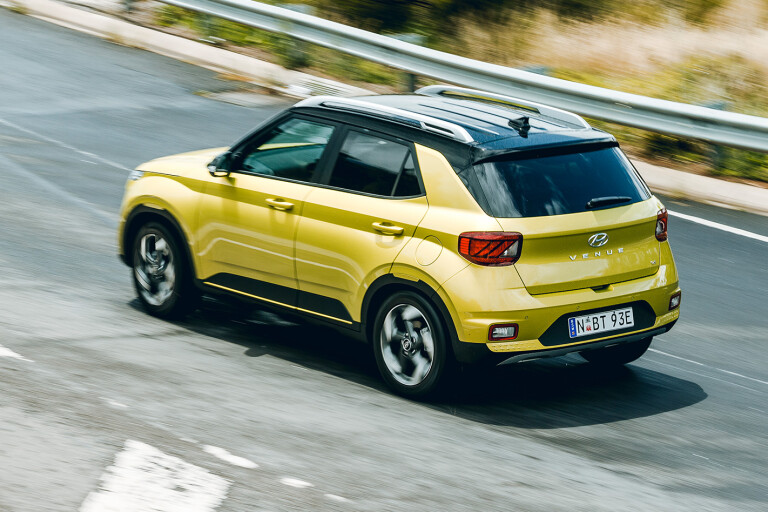
As with most cars in its category the Venue is built to a cost, but the parts that really matter – like the steering wheel and gear knob – are covered in partial leather in the Elite grade. The seats are very supportive by way of thick side bolsters, while the fabric is a nice design and framed by part-leather trim.
The interior on the whole is pretty funky place to be, with contrast stitching and accented colours livening up what would be a pretty dull concoction of hard black plastics – so credit to Hyundai for making the Venue’s insides feel greater than the sum of its parts.

One aspect of the interior that’s welcomed is the great 8.0-inch infotainment system that is found in a number of Hyundais and Kias now. It’s intuitive, clear, has a built-in sat nav and a multitude of other features for you to play around with, but if you just want your digital devices to integrate with one another then Apple CarPlay and Android Auto give you additional infotainment options as well.
Size-wise, the front passengers are pretty well accommodated with ample headroom and the Venue feels less cramped than you would expect of a pint-sized crossover. Of course, it does get tighter for back seat bandits. Legroom is fairly tight (but on par with its competition) and there’s no centre armrest, but there’s still ample headroom owing to its high glasshouse - which aids all-round visibility too. Unlike the Toyota C-HR, your backseaters won't be struggling to see out the side glass.
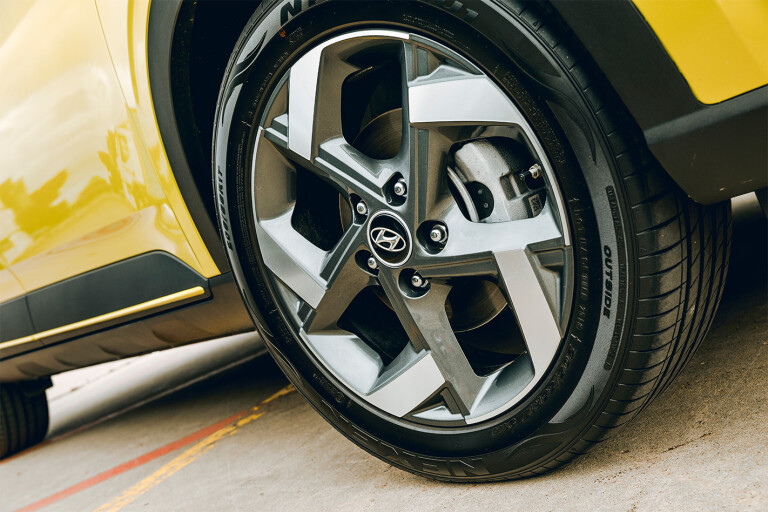
Its diminutive size is easy to manage around town, and a reversing camera (in addition to other safety equipment like forward collision avoidance, lane-keep assist and blind-spot warning) aids in the sense of safety.
It also features a 355 litre boot and the rear seats fold in a 60:40 split if you need that extra space for larger items.
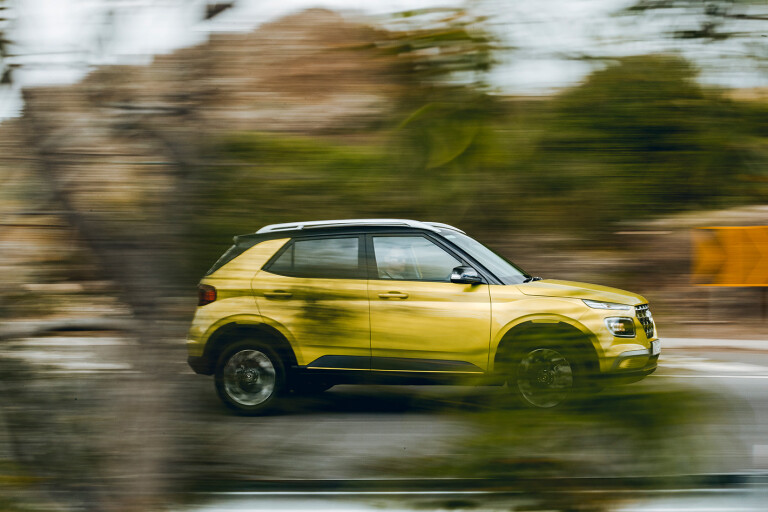
What is it like to drive?
“Fun and functional”, so says Hyundai. Not only does the Venue claim to attract looks from passers-by on the street, Hyundai also suggests it’s equally at home zipping about town as well.
But, although a majority of time is spent in the hustle and bustle of suburbia, an ownership experience is more than just about how a car performs on city streets.

Luckily, the Venue is well-suited to both camps with after our drive hitting a number of urban locations and some raucously potted country roads too. As with a number of other Hyundai products, the Venue is tuned to Australian road conditions and qualities and the ride is all the more pleasant for it.
The suspension can iron out corrugations well, smoothing out a rough trot while simultaneously coping well over harshly potted backroads. Road noise can tend to reverberate throughout the cabin and become tiresom on longer drives, and if venturing off-road stones and pebbles are noisily flicked up into the wheel arches, but if you’re spending a majority of time around town it shouldn’t be a problem.
Negotiating twists and turns could even be described as playful, with quick steering and good outward visibility combining to help the Venue skitter about town with ease.
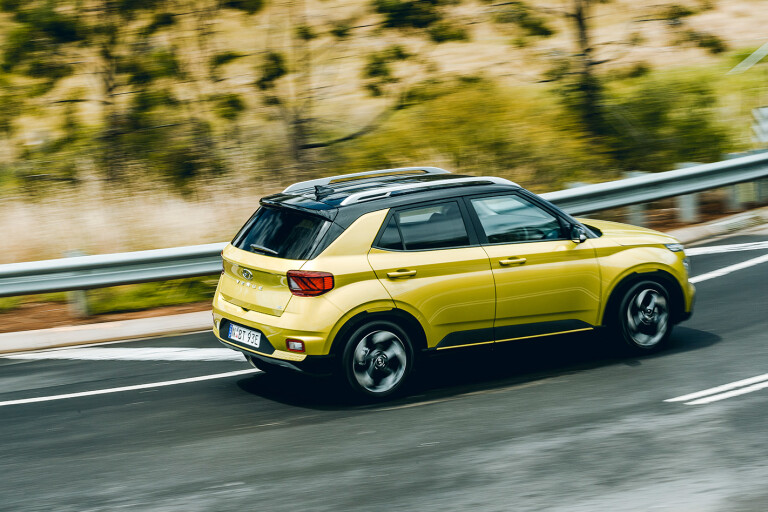
Ultimately, where the Venue could do with some backup is its powertrain. Its 1.6-litre non-turbo engine has to work hard to get up to speed, and the small power figure is especially highlighted when out of town and on the highway. The 9.5 L/100km fuel consumption we got on test, which included a lot of country and around-town scuttling, proved you really have to wring the engine out to get anywhere at even a modest pace.
That said, a lot of the engine’s issues were merely highlighted by country driving. So for those who purely operate within the city and can tolerate the Venue’s extra-urban shortcomings when venturing further afield, the Venue shouldn't disappoint.

Is it worth it?
We can’t really see too much of a downside with the Venue. It’s an affordable car with the right form-factor for a market that's going crazy for crossovers and SUVs, while also providing a very accomplished set of features.
Where we reckon you put your money though is the lower-specced Active ($23,490 before on-road costs) or entry-level Go (which is as low as $19,990 in manual-guise). Sure, you mightn’t get as many bells and whistles that you see here – but considering the Venue is already fairly well-equipped from the entry-level the value equation is even stronger at the bottom end.
Pros: Value for money, quirky-cool cabin design, infotainment system
Cons: Undercooked engine, noisy off-road and on highway
Rating: 4/5

COMMENTS